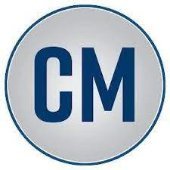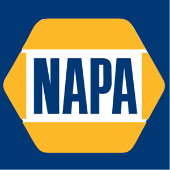-
Welcome to Auto Parts Forum
Whether you are a veteran automotive parts guru or just someone looking for some quick auto parts advice, register today and start a new topic in our forum. Registration is free and you can even sign up with social network platforms such as Facebook, X, and LinkedIn.
Saying ‘Thanks’ To Your Customers
-
Similar Topics
-
By NAPA
When it comes to working in the shop, personal safety should always be the top priority. Safety glasses, gloves, hearing protection, even work boots are all meant to keep your body protected. It should come as no surprise that with new hybrid and electric drivetrains, there are also new safety gear requirements. Insulated tools are just the start of a well-stocked shop. There’s more to electrical safety than just owning a set of
link hidden, please login to view. This expert advice is meant to give an overview of the kinds of general
link hidden, please login to view (PPE) needed to service hybrid and electric vehicles. It is important to follow proper repair procedures for these vehicles, as described in the vehicle specific repair manual. This includes using all required PPE listed in the repair procedure with no exceptions. If you do not have ALL of the necessary PPE, DO NOT proceed with a repair, as doing so could lead to severe injury or even death. Now that you have an idea of the serious nature of vehicle high-voltage electrical systems, let’s take a look at how you can protect yourself. Personal Protection
Wearing the right personal protection gear is a must when working with electric and hybrid vehicle high-voltage systems. The electrical energy stored in a typical main traction battery pack is more than enough to kill or seriously injure a person.
In the past, wearing gloves while working on a car was usually a personal preference. Today, when working on high-voltage electrical systems, wearing gloves is mandatory. And not just one pair of gloves, but two pairs (inner and outer) are to be worn together. Just in case you are wondering, welding gloves are NOT the same as high-voltage
link hidden, please login to view. Class 0 gloves are required for protection up to 1,000 volts AC and 1,500 volts DC. One pair of rubber gloves (inner) protects against electric shock, while the leather gloves (outer) protect the rubber gloves from mechanical wear. They must be worn together in order to perform correctly. Electrical gloves
link hidden, please login to view every six months to ensure they are still capable of insulating the user from the rated voltage. Gloves will be labeled with the test date near the cuff. The exact personal protection gear needed for a repair will be spelled out in the vehicle service repair manual procedures. This may include an insulated apron,
link hidden, please login to view, insulated arm sleeves, link hidden, please login to view, arc flash face shield with neck protection, and insulated mats or blankets. These layers of protection are necessary not just for avoiding shocks, but also potential explosions like an arc flash. Tool Safety
It may seem odd to consider hand tools as part of personal protection equipment, but that is exactly the case when working with electricity. Most ordinary hand tools are made from metal, which does an excellent job conducting electricity. For servicing high-voltage electrical systems tools need to be designed in such a way that they don’t provide a path for electricity to travel to the technician, or to other vehicle components. That’s why EV tools are specially designed to protect the technician when used properly.
An EV tool set is a must-have for any technician looking to service an electric vehicle. A good start for insulated hand tools is an insulated screwdriver set, an
link hidden, please login to view and an link hidden, please login to view. Electric vehicle tools used for diagnostics need to handle higher voltages, like this link hidden, please login to view. For repairs where the battery pack must be removed, special care must be taken due the extreme weight involved. A link hidden, please login to view is the proper way to lower and transport a hybrid or electric vehicle battery pack. You wouldn’t pull an engine out of a car without the proper lifting equipment, so give the same respect to a heavy traction battery pack. Work Space Safety
Normally, when a car is being worked on in a service bay, there is little danger to fellow technicians. But that isn’t the case with a modern electric or hybrid vehicle. Whenever the high-voltage electrical system on one of these vehicles is exposed, proper notification must be given to those working in the area. Place
link hidden, please login to view and link hidden, please login to view around the vehicle whenever the high voltage electrical system is being serviced. This warns other technicians that there is an electrical shock hazard in the shop, and to keep their distance. You may also place an electrical warning sign on the vehicle to signal to everyone in the shop to stay away. Part of your workspace safety gear must be an
link hidden, please login to view. If a technician suffers an electrical accident while working on a vehicle, anyone attempting to help them is also in danger of electric shock. An insulated safety hook must be used to separate the victim from the electrical source. The last tip for work space safety is to never work on an electric or hybrid vehicle alone. Always let another technician or coworker know you are working on a high-voltage electrical system, and to check in on you periodically. Training Is The Key To Safety
Working on hybrid and electric vehicle high voltage systems requires meticulous procedures and extensive training. While there are plenty of dangers when working on internal combustion vehicles, many of the safety procedures surrounding those vehicles have been known for decades. As EV and hybrid drivetrain become more mainstream, so will their service safety procedures.
Tackling hybrid and electric vehicle high-voltage system repairs isn’t impossible, but there must be dedication to proper training. If you are a technician (or are wanting to become a technician), and are looking for electric vehicle service training,
link hidden, please login to view can help. NAPA Auto Tech offers a wide variety of convenient, cost-effective ways to become an automotive professional. In addition to eLearning and instructor-led training, NAPA Auto Tech offers hands-on and seminar-style classes for almost every make and model to help technicians keep their skills up to date. Photos courtesy of Brian Medford.
The post
link hidden, please login to view appeared first on link hidden, please login to view.
link hidden, please login to view 




Recommended Posts
Join the conversation
You can post now and register later. If you have an account, sign in now to post with your account.
Note: Your post will require moderator approval before it will be visible.